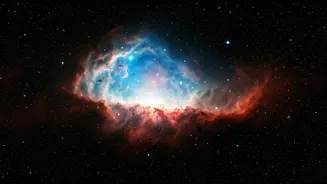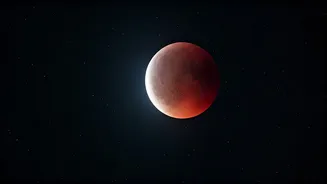Stellar Colors Explained
The temperature of a star dictates its color, a fact that may seem counterintuitive. The hotter a star gets, the more it leans towards the blue end of the spectrum,
defying the Earthly convention of temperature and color association. Scientists study these colors to learn more about the stars. The 'yellow dwarf' classification, to which our sun belongs, is often perceived as yellow, but it actually emits light in all colors of the visible spectrum. The color of the sun is classified as white.
Ancient Constellations Defined
The origin of the word 'star' comes from the Ancient Greek 'astron'. The Greeks recognized 12 of these celestial entities. Across various cultures, similar groupings of stars have been referenced, often carrying special meaning. Today, the International Astronomical Union recognizes a total of 88 constellations, marking a significant increase from the historical understanding.
Subrahmanyan's Limit Explored
Subrahmanyan Chandrasekhar, born in 1910, was a distinguished astrophysicist who won the Nobel Prize in Physics in 1983 for his contributions to the study of stellar evolution. His name is associated with the Chandrasekhar Limit, a crucial value in astrophysics. Stars that surpass this limit face a dramatic fate when they collapse, creating a phenomenon that is important in understanding the lifecycle of stars.
Proxima Centauri's Role
Proxima Centauri, a low-mass star, is situated 4.25 light-years away from Earth. Its diminutive size makes it invisible to the naked eye. The name of the star alludes to its critical significance: it is the closest star to our solar system. Understanding Proxima Centauri helps in comprehending the immediate surroundings of our planetary system, making it an essential point of research for astronomers.
Sun's True Color
Our sun, a nearly perfect sphere of hot plasma, emits light across the entire visible spectrum. Although we generally depict sunlight as yellow, and it's classified as a 'yellow dwarf' star, the sun's actual color is white. The perception of it being yellow is largely due to how the Earth's atmosphere scatters sunlight. Therefore, the sun's true color is actually composed of all colors.
White Dwarf 'Lucy'
The white dwarf star 'Lucy' is located 50 light-years away and has a diameter of 4,000 kilometers. Its composition is believed to be crystallised carbon. This crystallization occurs after a pulsar strips away most of its mass, leaving behind the core under intense pressure over billions of years. This transformation has led scientists to speculate that its now composed of crystal, influencing the star's unique characteristics.
Stars in Weddings
In Indian wedding traditions, the newlyweds often spot the stars Arundhati (Alcor) and Vasishtha (Mizar), which is a part of the Big Dipper constellation. This ritual is laden with symbolism, due to the close relationship between these two stars. These stars form a binary star system. Seeing these stars in the night sky holds great significance in establishing the newlyweds' future.
Distant Starlight Effects
When observing the night sky, light from stars travels immense distances, as far as 19 quadrillion miles. As starlight travels through the Earth's atmosphere, it faces disturbances due to atmospheric turbulence. These disturbances cause the light path to change, resulting in the twinkling effect. This twinkling effect is what leads to the 'twinkle, twinkle, little star' effect.
Observing the Stars
A common number used in star observations is 'a million'. This number is an overestimate, as the number of stars visible on a clear night is closer to 2,000 to 2,500. This variance highlights the clarity required for celestial observation, revealing that light pollution significantly impacts the visibility of stars.
Flags with Stars
There are 59 countries that incorporate stars on their national flags, with the United States having the most stars at 50. The flags of Brazil, Australia, and New Zealand have a unique feature regarding their stars. Brazil's flag includes stars representing its states and the federal district. Both Australia and New Zealand feature stars which are part of the Southern Cross constellation.
















